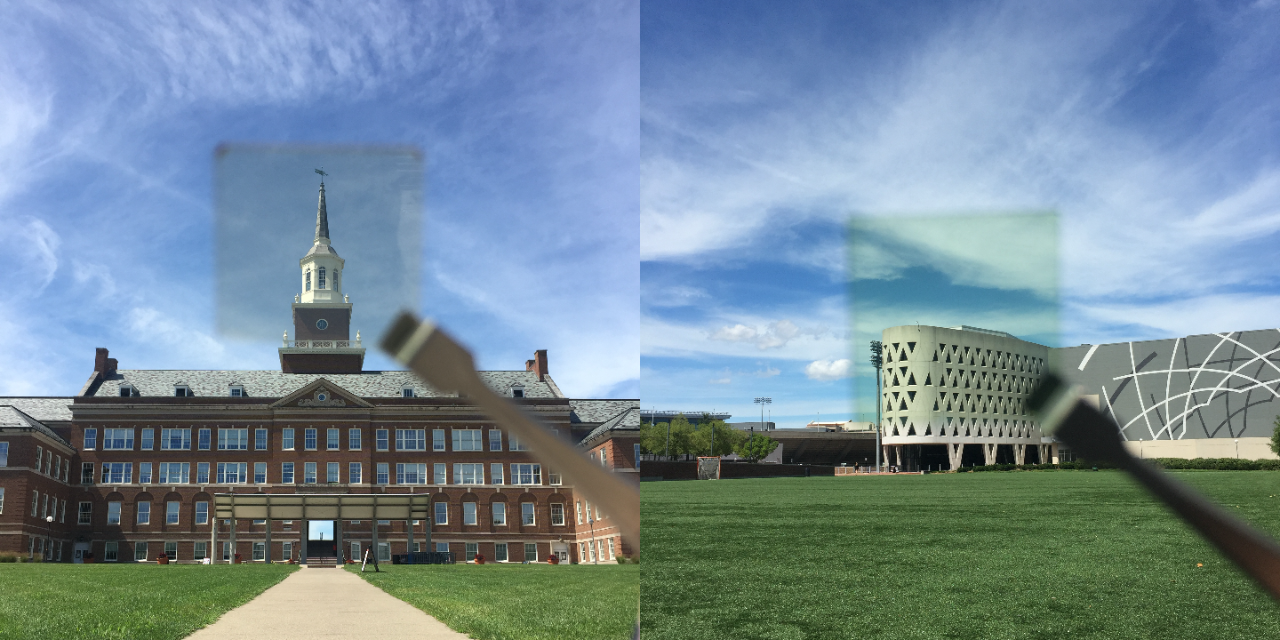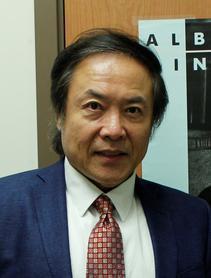Energy Materials and Nano-Biomedicine Laboratory
The Laboratory for Energy Materials and Nano-Biomedicine investigates fundamental structure-property relationships of nanomaterials for energy applications and nano biomedicine.
Energy Materials
Our research focuses on developing novel structures, via nanoscale design and compositional optimization, for creating unique physical properties in photonically-activated iron oxides and porphyrin compounds. The research activities deal with spectral-selective nanomaterials for solar light harvesting, conversion, and energy generation. Fundamental operating mechanisms are the key aspects of the research that correlate the physical properties to the electronic and molecular structures of the new nanomaterials. Transparent, spectral selective, and green thin films are developed based on various porphyrin compounds such as chlorophyll and chlorophyllin.

These spectral selective thin films are structurally tailored to the desired optical properties with strong UV and NIR absorptions and high visible transmittance. A new concept of photothermal- and photovoltaic- dual modality is developed based on these structurally designed materials that can efficiently harvest and convert solar light to both electricity and thermal energy, seasonably altered. The goal of research is to search for new paths leading the next-generation energy free infrastructure.
Nano Biomedicine
The advancement of nanotechnologies has profoundly transformed diagnosis and therapeutics in many aspects of medicine. With nanotechnologies, medical diagnosis and therapeutics can be carried out in a spatially and temporally precision fashion, even at the genetic level. Our Nanomedicine Laboratory deals with the critical issues on:
- Nano carrier design
- Biological barriers
- Therapeutic efficacy and toxicity
- Synergistic gene systemic delivery.
In collaboration with Cincinnati Children’s Hospital Medical Center, the most recent works concentrate on pulmonary vascular disease that encompasses a wide range of serious afflictions with important clinical implications. A promising avenue to overcome critical issues in efficient cell targeting within the lung is established via a uniquely designed nanosystem.

Polyplexes are created by functionalizing hyperbranched PEI with biological fatty acids and carboxylate-terminated PEG through a one-pot 1-ethyl-3-(3-dimethylaminopropyl)carbodiimide hydrochloride/N-hydroxysuccinimide reaction. Following intravenous injection, polyplexes show an exceptionally high specificity to the pulmonary microvascular endothelium, allowing for the successful delivery of stabilized enhanced green fluorescent protein (eGFP) expressing messenger ribonucleic acid (mRNA).
Recent Research
For details of current research activities, please visit our Recent Research page.
Faculty

Donglu Shi
Professor, CEAS - Materials Science & Engineering
493 Rhodes Hall
513-556-3100
Dr. Donglu Shi served as Chair and Graduate Director of Materials Science and Engineering between 2013 and 2023. He is presently the Director of Energy Materials and Nanomedicine Laboratories in the College of Engineering and Applied Science. Dr. Shi has conducted research across diverse fields such as nanoscience, energy materials, biomedical engineering, precision medicine, and condensed matter physics. His efforts have led to over 300 peer-reiewed journal publications with a Google Scholar h-index of 78. Some of his papers have appeared in leading journals like Nature, Nature-Communications, Physical Review Letters, Advanced Materials, and ACS Nano. He was a visiting scholar at Zurich University of Applied Sciences (ZHAW), Switzerland, Centre National de la Recherche Scientifique, Grenoble, France, and a Fellow at Fitzwilliam College, University of Cambridge conducting research on energy materials and nanomedicine. Additionally, Dr. Shi is a Fellow of ASM International and a Graduate College Fellow at the University of Cincinnati. He has so far supervised a total of 50 graduate students.
NSF research programs on energy materials
NSF research on plasma virus disinfection
Personal Website